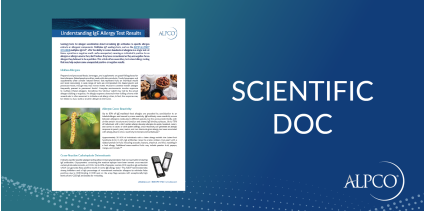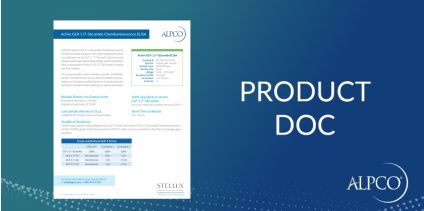Vaspin ELISA
The Vaspin ELISA is intended for the measurement of human Vaspin human serum. The Vaspin ELISA is for quantitative measurement of Vaspin is based on polyclonal rabbit antisera raised by genetic immunization of the rabbits (cDNA Vaspin SC306941).
Research Use Only. Not for Use in Diagnostic Procedures.Vaspin also known as SerpinA12 is a serine protease inhibitor and consists of 395 amino acids forming 3 ß-sheets and 9 a-helices. Molecular weight of Vaspin is about 45.2 kDa. It does not form multimeric aggregates or intra-molecular disulfide bridges and no binding proteins in human serum are known. The Vaspin gene is not only expressed by subcutaneous and visceral adipose but also by liver tissue, in the pancreas1 and in the human epidermis (granular keratinocytes / GK cells).
Serum Vaspin levels were highest in the early morning before breakfast and fell to trough levels within 2 h after breakfast. Serum Vaspin levels also showed a preprandial rise and postprandial fall at lunch and dinner, although at lesser degrees than at breakfast. Intermeal Vaspin concentrations reached a nadir in the mid-afternoon and showed a nocturnal rise, with peak nighttime Vaspin levels being approximately 250% of nadir levels. Unscheduled food ingestion after a prolonged fast significantly reduced serum Vaspin levels, suggesting that energy intake itself has a suppressive effect on serum Vaspin levels. The diurnal pattern of serum Vaspin concentrations was exactly reciprocal to that of insulin and of glucose”.
A sexual dimorphism has been detected with higher Vaspin levels in girls increasing with age and pubertal stage1,4. A preliminary investigation (n = 81) of Vaspin levels in healthy adult blood donors revealed higher Vaspin levels in women decreasing with increasing age. In this context it is important to reflect, that oral contraceptives significantly increase serum Vaspin concentration.
Serum Vaspin concentration is independent of BMI but negatively associated with insulin sensitivity and obesity, thus “Vaspin was increased with worsening insulin resistance”. If glucose metabolism / insulin sensitivity is improved by therapeutic intervention e.g. rosiglitazone, plasma Vaspin concentration decreases significantly5. Interestingly lifestyle intervention results in increasing adiponectin concentrations as well as in improved insulin sensitivity but after a 10 months intervention Vaspin concentration remain unchanged6. Thus, the mechanism regulating the Vaspin concentration in circulation is still unclear. Vaspin concentration might be even more influenced by glucose uptake than by body fat at least in pre-pubertal children.
In insulin resistance, diabetes as well as atherosclerosis inflammatory processes are involved and Vaspin might be a link between the endocrine and the immune system. To elucidate the role of Vaspin in inflammation its influence on TNF-a-stimulated production of reactive oxygen species was investigated in smooth muscle cells. Vaspin significantly decreased the TNF-a-induced monocyte adhesion to SMCs as well as TNF-a induced intracellular signal cascade.
The diagnostic value of Vaspin remains unclear, conflicting results question its value as biomarker for visceral or total adipose tissue. As well as regarding insulin resistance while in children Vaspin might correlate with insulin sensitivity1 but in adults no correlation was found.
The Vaspin ELISA is a tool for the further investigation and validation of Vaspin as a biomarker for the visceral adipose tissue, insulin sensitivity and glucose tolerance.







